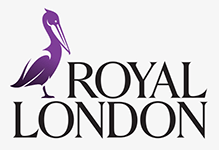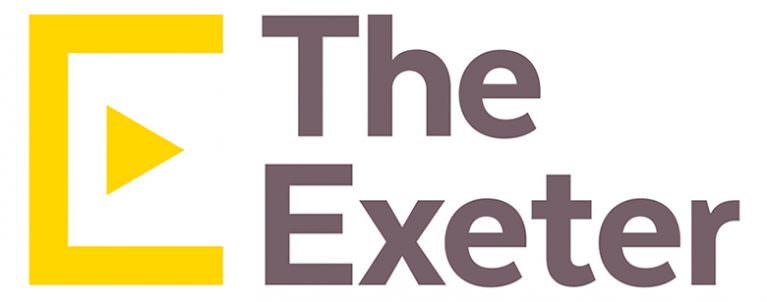Article on: ‘Protect Insurance’ Protect Insure

5 Main Types of UK ‘Protection Insurance’
As UK Life Insurance Brokers, we deal with many of the main types of protect insurance In the UK protection marketplace.
In this article, we will therefore look at the following 5 types of ‘protection insurance’ to help both protect insure your family & business.
We will then examine some of the pro’s & con’s of these various protect policy plans.
- Term Protection Insurance (Family Life & Business Life)
- Whole of Life Assurance
- Mortgage Protect Insurance
- Critical Illness Cover
- Income Protection Insurance
‘Protect Insurance’ – Protect Insure your Family & Business
Level Term Protection Insurance
- Level Term ‘Protection Insurance’ are simple plans to operate
- If you die within that set ‘term’, your family will get the set life insurance lump sums or family income benefits payment
- Cover is ‘underwritten’ meaning Insurers will ask you medical & lifestyle questions before offering terms
- A term death insurance policy will then protect insure cover for a fixed period of time or ‘term’. eg; 25/35/50 years
- You could set up protect insurance to when any child is independant, upto retirement, or even upto age 90
- Could set up as a top up plan to any work death on service cover
- Often includes free terminal illness which means an advanced death claim as incurable
- Because it runs for a set term, it may have affordable premiums
- Medical evidence may be required & a medical examination for based amounts of cover or those with health issues
Conclusion: Often good value for money BUT you may live out that nominated term
Whole of Life Assurance
- Whole of life assurance is unique in the Life Insurance marketplace.
- It guarantees it will pay out a lump sum whenever you die or diagnosed terminally ill.
- It has no set or fixed time frame unlike term life protect insurance.
- You are covered even if you live to 250 years old !
- Help toward Final Expenses costs ie; Typically sold via Over 50’s plans
- Insure against possible Inheritance Tax IHT liabilities
- Continuous No Future Health Issues coverage for life insurance
- Medical evidence may be required & a medical examination for based amounts of cover or those with health issues
Conclusion: A continuous life protect policy BUT expensive as it will always payout
Mortgage Protect Insurance
- A Decreasing style ‘protection insurance’ will reduce over the mortgage loan term but the premiums remain level
- It may help to protect insure and repay your personal or business mortgage, loan or other debt
- You can set the % at which the plan reduces at outset to balance where that amount owing will also reduce over the term
- For example; If your bank loan rate is fixed at say 5% for 15 years, then so could the policy interest rate
- However, once the mortgage protect insurance is setup – then so is the loan rate reductions fixed at which it reduces
- Level term protect policy may suit if you have an interest-only mortgage ie; the amount owing stays the same
- Medical evidence may be required & a medical examination for based amounts of cover or those with health issues
Conclusion: Ideal to protect insure repayment mortgages BUT ensure plan % reductions are sufficient if mortgage rates increase
Protect Insure ‘Protect Insurance’ Claims Risks

Critical Illness Cover
- Designed to protect insure upon diagnosis & survival of a specified Critical / Serious illness
- Critical Illness Protect policy benefits are currently paid out tax free upon a claim
- Insurers plan terms vary & may cover between 25-100 different types of serious illness benefits
- Critical Illness coverage usually all include these main 3 claims:- Cancer, Heart Attack & Stroke
- Designed to pay out usually as a lump sum upon diagnosis of a dread disease
- Protect insurance critical illness premiums may be fixed guaranteed or reviewable
- Medical evidence may be required & a medical examination for based amounts of cover or those with health issues
Conclusion: The chances of a claim are high BUT the premiums reflect this higher risk
Income ‘Protection Insurance’ (PHI)
- Offers help to protect insure & provide a tax free income upon accident, sickness or hospitalisation
- May have an initial waiting or deferred / waiting period ie; 4/8/13/26/52 weeks
- Insurers PHI protect policy can usually run upto state pension ages or upto age 70
- Can be offered as budget cover with 12/24/60 months per claim or comprehensive full term per claim
- Cover may be based on maximum of say upto 70% of your pre-tax gross annual earnings
- Medical evidence may be required & a medical examination for based amounts of cover or those with health issues
Conclusion: You may have ‘some’ work sickpay BUT an Income ‘Insurance Protection’ is ready when that stops
‘Protect Insure’ Protect Insurance Serious Illness Risks

How much ‘Insurance Protection’?
Why do people look for a ‘Protection Insurance’ policy?
Any protect insurance is designed to financially help those cope with their day to day money worries & stress that may happen when off work sick or losing a loved one. We all have to pay bills.
For many families a suitable ‘insurance protection’ policy = Peace of Mind.
We all may think we are invincible….. But
So as Life Insurance Agents in an ideal world – we suggest this simple protect insure formula.
- LUMP SUM > Repay any mortgage & debts, cover funeral costs
- INCOME > Help cover your monthly bills
- LUMP SUM > Back up for holidays, education, emergencies
Martin Lewis Life Insurance formula instead suggests protect insurance of:
 10 x annual gross salary of the main breadwinner
10 x annual gross salary of the main breadwinner
Using that principle, if you earned £31,250pa gross, Martin Lewis says you should maybe consider insuring yourself (after any debts, mortgages & loans are fully repaid) for say £312,500 cover life insurance (ie; 10 x the annual gross income).
Following on from this simple Martin Lewis example formula above, if you then worked for the next 32 years until state retirement, you could potentially earn over £1 million gross ie; £31,250pa x 32 years [or more with any future inflationary wage rises].
As such, unlike the 10 x £31,250 gross salary life coverage insurance example above – you could instead protect your family with either;
- Income = £2,604pm or £31,250pa family income benefit lifecover policy
- Lump sum = £1 million level term life insurance policy [if invested @ 3.12% return = £31,250pa]
- Or a mixture of the 2 policy types over the next 32 years – all dependant on your family circumstances.
- You can also decide wether you want the cover to be level or inflation linked
- A Single ‘protect policy’ | 2 x seperate protect insurance plans | or Joint life insurance 1’st claim
However, as Financial Advisers we are not saying this ‘Money Saving Expert formula’ 10 x salary life ‘insurance protection’ is therefore a 100% one size fits all scenario…
ie; This protect insurance formula is not applicable for everyone’s own personal situation. You may have some ‘protection insurance’ cover via work death on service benefit or sickpay – but is that enough?
Apart from losing a loved one, this real hidden income threat is what could be lost if the main breadwinner died prematurely. Or gives you an idea if someone was off long term ill – the potential income loss.

 ‘Protection Insurance’ Broker FAQ 2025
‘Protection Insurance’ Broker FAQ 2025
Should I put my ‘Insurance Protection’ policy into Trust?
When a life ‘protection insurance’ policy isn’t written into trust, it will be paid to the executors of the deceased’s estate. If you have not made a will, this can then cause further complications with the life insurance monies.
These executors will handle the estate administration, known as probate in N Ireland, England, Wales and confirmation in Scotland. If not, the benefits will fall into your estate if you died prematurely.
Until probate is fully granted, no monies can be paid out to those named in the will. On average, this can take upto 6 months. By not placing the plan into trust may also swell up the total estate values, leading to potentially Inheritance Tax IHT issues.
So placing a policy in trust can help to ensure that the policy proceeds go to the correct beneficiaries you decide to nominate at that stage. It can also help avoid possible probate delays & IHT costs. Ask the Insurers to kindly provide their available standard protect insurance policy trust form wordings & seek legal advice if unsure.
Importance of Disclosure & Claims?
All Insurers are in business to protect insure & payout. Life ‘Insurance Protection’ is therefore based on your full disclosure at the time you take the original policy out (even if it costs more for life insurance for those with health issues) ie; being 100% as honest & accurate as possible. It is not always easy to remember all your historic health details when applying.
The Consumer Insurance Act 2013 says you must not be acting careless, deliberate or reckless manner when applying. If so, it may not payout ! eg; If you have family history of diabetes or heart issues (even if you are okay currently) then you must tell them. Or, you forget to even advise you have a lifestyle issue because it does not currently cause you any health problems.
Should you make a claim, your Insurers will send you a claim form for you to complete. Once received back, they will usually contact your GP to confirm any health details disclosed.
They will then assess if your insurance claim is valid and cross check if you originally disclosed all the correct details – on your life insurance, income protection or critical illness claim. If you look at most Insurers recent claims payout, you will see that it is Good (but like most Insurers – not 100%).

What if my health changes after taking the protect policy out?
Any health or lifestyle changes since, usually does not void your existing life ‘protection insurance’, if it wasn’t relevant at that time of initial underwritten insurance application.
For example, you have thyroid issues diagnosed several years afterwards. In this instance, the insurers should not classify the original application as non disclosure. It maybe the Insurers request GP reports when you originally apply, to check any health details disclosed. Likewise they may not.
So take care to doubly re-check on your application what you initially disclosed to the Insurers, as this information then stands now and in the future. Please check your original T&C’s.
Alternatively, if your own Insurers originally applied health rated terms re any ‘insurance protection’, then it can sometimes be worth reviewing your application. If your health has improved and any symptoms are now under control. It could be we could get better terms via another Insurer? Contact us for Broker help
Article on ‘Protect Insure with Protect Insurance’ by Martyn Spencer Financial Adviser (2025)
For reassurance re health for men & women – we review many of the best Life Insurers selling Life Insurance in UK (inc NI)
 Myself
Myself My
My My Income
My Income









 'There is...ONLY 1 YOU'
'There is...ONLY 1 YOU' 



















